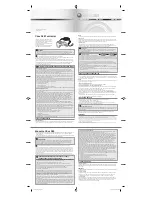
255.805.001
29
Date: 2021-03-12
Note that tuning the PID controller can be advanced and lead to uncontrolled behaviour. Setting
the speed channel to 0% will cause the motor to stop at any time and therefore this option
should be available at hand. PID values are only used in Mode 3 and 4.
Use the following steps to tune your PID. As a rule of thumb,
only adjust one PID variable at a
time
.
1.
Set the two limits so that positioning control is possible.
2.
Set the
S-factor
channel to 20%.
3.
Gradually increase the
P-factor
channel while positioning. If
P-factor
is too low
the motor will decelerate slowly and possibly not reach its correct position, and if
it is too high it will overshoot its position and not settle.
4.
If the motor consistently settles at the correct position you are done tuning. If it
does not reach the correct position you should gradually increase the
I-factor
until
it does. If the
I-factor
is too big the motor will overshoot its position.
5.
Unless you want a very fast response or are controlling a low friction system with
high inertia you should be done. If you still feel the need for a faster deceleration
but this fails, you can increase the
P-factor
so that the motor overshoots and then
increase the
D-factor
so that the overshoot is suppressed. Note that this is for
very special systems only and for 99% of cases the
D-factor
should stay at 0.
Should you reach the maximum of one fader value you can decrease the
S-factor
. The
S-factor
scales all the other factors so an
S-factor
of 20% and
P-factor
of 80% is equivalent to an
S-factor
of 10% and a
P-factor
of 40%. Should you on the other hand find that the
P-factor
is too
sensitive to set precisely you can increase the
S-factor
.












































